Blog Archives
Trent Williams Not Fully Recovered from Ankle Injury for Offseason Practice
 Trent Williams, Red Skins left tackle, is still recovering from his ankle injury that was sustained during a season ending game against Dallas. Although offseason practices started in early June, Williams was not given the okay to participate. The Pro Bowl player was quick to change his routine to remedy the ankle; however, it was not healing as fast as it should have been.
Trent Williams, Red Skins left tackle, is still recovering from his ankle injury that was sustained during a season ending game against Dallas. Although offseason practices started in early June, Williams was not given the okay to participate. The Pro Bowl player was quick to change his routine to remedy the ankle; however, it was not healing as fast as it should have been.
Ankle injuries are common, but need to be treated as soon as possible. If you have any concerns about your ankles contact Dr. Sharon L. Pletcher of Pennsylvania. Our doctor will treat your foot and ankle needs.
What To Know About Ankle Injuries
It is very common to incur an injury to the ankle. As the point of connection from the leg and the foot, the ankle is susceptible to sprains and fractures due to its location. Ankle sprains, the most common ankle injury, occur when the foot is twisted in an unnatural way. This unnatural twisting of the ankle results in severe pain as a result of inflammation and swelling. This inflammation and swelling comes from fluid leakage into the tissues, which sensitize and place additional pressure on the nerves. Heavy blood flow also occurs, which is why swollen ankles are warm to the touch. Ankle sprains can occur by the following means:
- Sports injuries
- Slipping on stairs
- Walking on uneven ground
While ankle sprains can be minor, if you are experiencing severe pain, bone deformity, loss of sensation or even an inability to walk, it is a sure sign that you require immediate medical attention. X-rays could determine potential fractures. The ankle can experience injury in the joint, tendons, and ligaments. Anytime there is an ankle injury ice should be applied to the injured area in order to reduce inflammation. To reduce pressure, elevate the ankle above the level of the heart and apply an elastic bandage as needed.
If you have any questions please feel free to contact our office located in State College, PA. We offer the newest diagnostic tools and technology to treat your foot and ankle needs.
Read more about ankle injuries.
Athlete’s Foot can be alleviated with Spray Powders
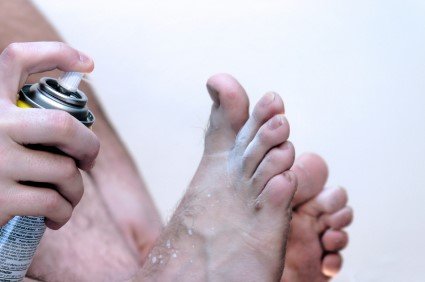 According to Chemmie Squier of The Debrief, athlete’s foot can often be reduced with the help of spray powders. Athlete’s foot occurs in humid conditions which is most commonly in sports shoes. The warm and humid atmosphere helps fungi on the feet to multiply. Since athlete’s foot is contagious, it is best to rid of the ailment as soon as possible. The most common form of treatment includes creams; however, spray powders can be applied easier than creams. Overtime, if there is no improvement with athlete’s foot, it is best to see a doctor for ultimate treatment.
According to Chemmie Squier of The Debrief, athlete’s foot can often be reduced with the help of spray powders. Athlete’s foot occurs in humid conditions which is most commonly in sports shoes. The warm and humid atmosphere helps fungi on the feet to multiply. Since athlete’s foot is contagious, it is best to rid of the ailment as soon as possible. The most common form of treatment includes creams; however, spray powders can be applied easier than creams. Overtime, if there is no improvement with athlete’s foot, it is best to see a doctor for ultimate treatment.
Athlete’s foot is an inconvenient condition that can be easily reduced with the proper treatment. If you are concerned about your athlete’s foot contact Dr. Sharon L. Pletcher of Pennsylvania. Our doctor will treat your foot and ankle needs.
Athlete’s Foot: The Sole Story
Athlete's foot, also known as tinea pedis, can be an extremely contagious foot infection. It is commonly contracted in public changing areas and bathrooms, dormitory style living quarters, around locker rooms and public swimming pools, or anywhere your feet often come into contact with other people.
Solutions to Combat Athlete’s Foot
- Hydrate your feet by using lotion
- Exfoliate
- Buff off nails
- Use of anti-fungal products
- Examine your feet and visit your doctor if any suspicious blisters or cuts develop
Athlete’s foot can cause many irritating symptoms such as dry and flaking skin, itching, and redness. Some more severe symptoms can include bleeding and cracked skin, intense itching and burning and even pain when walking. In the worst cases, athlete’s foot can cause blistering as well. Speaking to your podiatrist will give you a better understanding of the different causes of athlete’s foot, as well as helping you figure out which treatment options are best for you.
If you have any questions please feel free to contact our office located in State College, PA. We offer the newest diagnostic tools and technology to treat your foot and ankle needs.
Understanding Biomechanics of the Feet Can Prevent Running Injuries
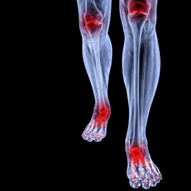 Running is an important daily routine for many people; however, runners should keep in mind the biomechanics of the foot to prevent running injuries. The metatarsal bones are often regularly injured during the foot to ground impact when running with metatarsalgia, inflammation on the bottom of the foot. The metatarsal bones are located in the forefoot and there are five, connecting to the mid-foot to the toes. The heaviness of the body and the impact on the foot result in symptoms such as sharp, stabbing, burning pain. Injury to the metatarsals can be reduced with smart training practices, proper fitting shoes, orthotics, and using recovery days to rest the feet.
Running is an important daily routine for many people; however, runners should keep in mind the biomechanics of the foot to prevent running injuries. The metatarsal bones are often regularly injured during the foot to ground impact when running with metatarsalgia, inflammation on the bottom of the foot. The metatarsal bones are located in the forefoot and there are five, connecting to the mid-foot to the toes. The heaviness of the body and the impact on the foot result in symptoms such as sharp, stabbing, burning pain. Injury to the metatarsals can be reduced with smart training practices, proper fitting shoes, orthotics, and using recovery days to rest the feet.
Biomechanics of the feet can help you understand how to prevent injury and help doctors treat your foot and ankle ailments. If you have any concerns contact Dr. Sharon L. Pletcher of Pennsylvania. Our doctor will treat your foot and ankle needs.
Biomechanics in Podiatry
Podiatric biomechanics is a particular sector of specialty podiatry with licensed practitioners who are trained to diagnose and treat conditions affecting the foot, ankle and lower leg. Biomechanics deals with the forces that act against the body causing an interference with the biological structure and focuses on the movement of the ankle, the foot and the forces that interact with them.
A History of Biomechanics
- Biomechanics dates back to the BC era in Egypt where evidence of professional foot care has been recorded.
- In 1974 biomechanics gained a higher profile from the studies of Merton Root, who claimed that by changing or controlling the forces between the ankle and the foot, corrections or conditions could be implemented to gain strength and coordination to the area.
Modern technology improvements are based on past theories and therapeutic processes providing a better understanding of podiatry concepts for biomechanics. Computers provide accurate determinations about the forces, moments and patterns of the foot and lower legs with the most important information captured.
Advances in materials and more awareness of biomechanics have developed enhanced corrective methods, offering further options for foot-related injuries. Understanding foot biomechanics can help improve and eliminate pain, stopping further stress to the foot.
If you have any questions please feel free to contact our office located in State College, PA. We offer the newest diagnostic tools and technology to treat your foot and ankle needs.
Swedish Company Designs 3D Camera to find Proper Fitting Shoes
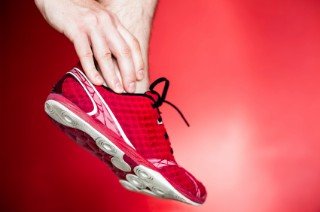 Volumental, a Swedish based firm, has developed software with the capability to take a lifelike image of the foot for users to find a more exact shoe fit. The image is said to be in 3D with the use of spatial awareness cameras. Founded in the Royal Institute of technology in Stockholm, became refutable need upon the realization that there are many inconsistencies between shoes and the size or shape of the foot. “Our vision is that the system of going around the stores, trying on lots of shoes or jeans and different products and having a problem of not knowing whether you are a medium or large …I think that system will be gone in 10 years. Instead it will be size me,” stated Caroline Walerud co-founder of Volumental.
Volumental, a Swedish based firm, has developed software with the capability to take a lifelike image of the foot for users to find a more exact shoe fit. The image is said to be in 3D with the use of spatial awareness cameras. Founded in the Royal Institute of technology in Stockholm, became refutable need upon the realization that there are many inconsistencies between shoes and the size or shape of the foot. “Our vision is that the system of going around the stores, trying on lots of shoes or jeans and different products and having a problem of not knowing whether you are a medium or large …I think that system will be gone in 10 years. Instead it will be size me,” stated Caroline Walerud co-founder of Volumental.
Finding a proper fitting shoe is important in reducing injuries and preventing foot problems. For more information contact Dr. Sharon L. Pletcher of State College, PA. Our doctor will treat your foot and ankle needs.
Proper Shoe Fitting
A common concern when it comes to foot health, having properly fitted shoes can help prevent injuries to the foot. Out feet affect our posture and gait, which in turn affects the biomechanics and overall bodily structure. With 33 joints, 26 bones, and over 100 ligaments, the potential for serious injury is much greater than one realizes. Although the feet cease growth in adulthood, they still change shape as they mature. Here are come factors to consider when it comes to investing in properly fitting shoes:
- Be sure the shoes fit correctly right away
- Ensure the ball of your foot fits comfortably in the widest portion of the shoes
- Even though they may look fashionable, improperly fitting shoes can either create adverse conditions or exacerbate existing ones you may already have
- Walk along a carpeted surface to ensure the shoes comfortably fit during normal activity
Keeping in mind how shoes fit the biomechanics of your body, keeping properly fit shoes is vitally important. Fortunately, it is not difficult to acquire footwear that fits correctly. Be sure to wear shoes that support the overall structure of your body. Do your feet a favor and invest in several pairs of well-fitted shoes today.
If you have any questions, please feel free to contact our office located in Pennsylvania. We offer the newest diagnostic tools and technologies for your foot and ankle needs.
Swimming a Great Way to Stay In Shape While Reducing Pressure on Feet
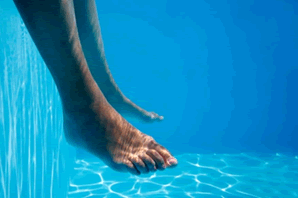 According to Russell Pressler of TriHealth, swimming is a great way to relieve foot pain while staying physically active this summer. Although the average person can experience foot pain any time of year, it is more common for podiatrists to have visitors in the summer due the increased activity the warmer weather brings. For those experiencing a foot injury this summer, it is still possible to remain active this summer with swimming. The activity allows those injured to remain physically fit without adding pressure or overusing the foot.
According to Russell Pressler of TriHealth, swimming is a great way to relieve foot pain while staying physically active this summer. Although the average person can experience foot pain any time of year, it is more common for podiatrists to have visitors in the summer due the increased activity the warmer weather brings. For those experiencing a foot injury this summer, it is still possible to remain active this summer with swimming. The activity allows those injured to remain physically fit without adding pressure or overusing the foot.
Swimming is a great way to exercise the feet. If you have any questions regarding the benefits of swimming on the feet, consider contacting podiatrist Dr. Sharon L. Pletcher from Pennsylvania. Our doctor will explain the unique health advantages this activity has and recommend some simple exercises.
Benefits of Swimming and Foot care
Our feet receive the most stress on a daily basis. Walking, running, and long standing contribute to pain and stress on the feet. Swimming helps promote circulation and keep the body feeling great and healthy.
Benefits of swimming:
Improve blood circulation
- Swimming is a good, safe way to get in extra physical activity and improve circulation, without causing further trauma to the feet.
Relieve aches or pains
- It takes all the pressure off of them, allowing the feet to relax and recover, and improves blood flow to the
Circulation overall for diabetics
- Swimming contributes to blood flow, and increase oxygen levels within the body.
Reduce foot inflammation
- Swimming in warm water can increase blood flow and make it easier to move and stretch the afflicted foot. The feet are also exposed in water, giving them much needed air.
Swimming the helpful alternative:
Many people like the elderly and diabetics suffer from weakened muscles and joints. A water sport like swimming will support the body, thus allowing him or her to move freely. Blood flow circulation is a main trigger to tired inflamed feet.
If you have any questions please feel free to contact our office located in State College, PA. We offer the newest diagnostic and treatment technologies for all your foot and ankle needs.
Quality Shoe Materials can help prevent Foot Problems
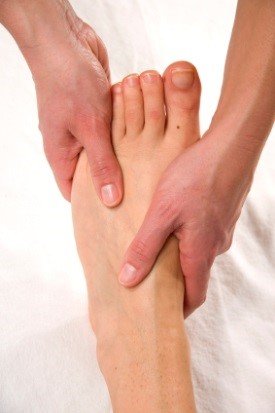 Leo Faramelli of Leo’s Shoe Repair has a lot of experience selling and repairing shoes and has a vast understanding of how certain shoes can cause problems for the feet. “Older shoes are made a lot better. There’s much more real leather. Today, most of the shoe is vinyl to an extent,” Leo states. Today shoes are made with a cheaper grade of leather than is then coated with vinyl and plastic. The shoes look great but that are not as quality, putting customers feet at risk for problems such as corns. Shoes made out of real leather will mold to your feet.
Leo Faramelli of Leo’s Shoe Repair has a lot of experience selling and repairing shoes and has a vast understanding of how certain shoes can cause problems for the feet. “Older shoes are made a lot better. There’s much more real leather. Today, most of the shoe is vinyl to an extent,” Leo states. Today shoes are made with a cheaper grade of leather than is then coated with vinyl and plastic. The shoes look great but that are not as quality, putting customers feet at risk for problems such as corns. Shoes made out of real leather will mold to your feet.
Shoes that are not properly suited for the feet can cause corns and other podiatric problems. If you have any foot or ankle concerns, contact Dr. Sharon L. Pletcher of Pennsylvania. Our doctor will attend to your foot and ankle needs.
Corns: What are they? And how do you get rid of them?
Corns can be described as areas of the skin that have thickened to the point of becoming painful or irritating. They are often layers and layers of the skin that have become dry and rough, and are normally smaller than calluses.
Ways to Prevent Corns
There are many ways to get rid of painful corns such as wearing:
- Well-fitting socks
- Comfortable shoes that are not tight around your foot
- Shoes that offer support
Treating Corns
Treating corns involves removing the dead skin that has built up in the specific area of the foot. Salicylic acid can help in getting rid of these corns because it dissolves keratin, which is the protein that makes up a good majority of corns. Podiatrists recommend that people with diabetes not use salicylic acid but should consult with their podiatrist regarding the treatment of corns.
If you have any questions feel free to contact our office located in State College, PA. We offer the newest diagnostic tools and technologies to treat your foot and ankle needs.
Read more about Corns on the Feet
Dancing with the Stars Instructor Suffers from Broken Toe during Rehearsal
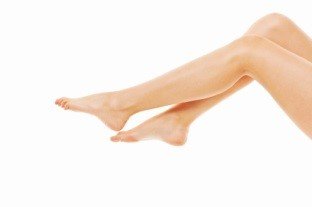 Derek Hough, five time champion instructor on Dancing with the Stars, has suffered a broken toe after rehearsing for the show’s 10th anniversary special. Derek will have to stay in Los Angeles until his injuries are rehabilitated. For now his understudy will take over for the New York Spring Spectacular in New York City. As for Dancing with the Stars, Hough was unable to compete with Nastia Liukin, but pro-dancer Sasha Farber stepped in temporarily. “He’ll come back harder, better, faster, stronger,” his co-star stated.
Derek Hough, five time champion instructor on Dancing with the Stars, has suffered a broken toe after rehearsing for the show’s 10th anniversary special. Derek will have to stay in Los Angeles until his injuries are rehabilitated. For now his understudy will take over for the New York Spring Spectacular in New York City. As for Dancing with the Stars, Hough was unable to compete with Nastia Liukin, but pro-dancer Sasha Farber stepped in temporarily. “He’ll come back harder, better, faster, stronger,” his co-star stated.
A broken toe can be very painful and lead to complications if not properly fixed. If you have any concerns contact Dr. Sharon Pletcher of Pennsylvania. Our doctor will treat your foot and ankle needs.
What to Know About a Broken Toe
Although most people try to avoid foot trauma such as banging, stubbing, or dropping heavy objects on their feet, the unfortunate fact is that it is a common occurrence. Given the fact that toes are positioned in front of the feet, they typically sustain the brunt of such trauma. When trauma occurs to a toe, the result can be a painful break (fracture).
Symptoms of a Broken Toe
- throbbing pain
- swelling
- bruising on the skin and toenail
- the inability to move the toe
- toe appears crooked or disfigured
- tingling or numbness in the toe
Generally, it is best to stay off of the injured toe with the affected foot elevated.
Severe toe fractures may be treated with a splint, cast, and in some cases, minor surgery. Due to its position and the pressure it endures with daily activity, future complications can occur if the big toe is not properly treated.
If you have any concerns please feel free to contact our office located in State College, PA. We offer the newest diagnostic tools and technology to treat your foot and ankle needs.
Footballer Out for the Season due to Broken Ankle
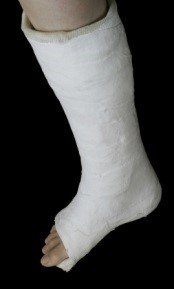 Footballer Emad Sahab of Al Orubah sustained a severe broken ankle after tumbling in a game against Al Shoalah. The ankle twisted 180 degrees.
Footballer Emad Sahab of Al Orubah sustained a severe broken ankle after tumbling in a game against Al Shoalah. The ankle twisted 180 degrees.
The game was quickly halted for a temporary amount of time as Sahab’s teammates witnessed the occurrence in great horror. Al Orubah, Sahab’s team, eventually continued their match to win 2-0. The team’s success, however, was overshadowed by the incident and Sahab’s resulting injury.
Broken ankles are very painful. If you have any concerns contact podiatrist Dr. Sharon L. Pletcher of Pennsylvania. Our doctor will treat your foot and ankle needs.
Broken Ankles
A broken ankle is experienced when a person fractures their tibia or fibula in the lower leg and ankle area. Both these bones are attached at the bottom of the leg and combine to form what we know to be our ankle.
When a physician is referring to a break of the ankle, he or she is usually referring to a break in the area where the tibia and fibula are joined to create our ankle joint. Ankles are more prone to fractures because the ankle is an area that suffers a lot of pressure and stress. There are some obvious signs when a person experiences a fractured ankle and the following symptoms may be present.
Symptoms of a Fractured Ankle
- Excessive pain when the area is touched or when any pressure is placed on the ankle
- Swelling around the area
- Bruising of the area
- Area appears to be deformed
If you suspect an ankle fracture, it is recommended to seek treatment as soon as possible. The sooner you have your podiatrist diagnose the fracture, the quicker you’ll be on the way towards recovery.
If you have any questions please feel free to contact our office located in State College, PA. We offer the newest diagnostic tools and technology to treat your foot and ankle needs.
Read more about broken ankles.
The Difference between Facts and Myths of Bunions
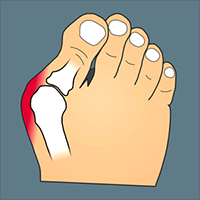 When it comes to bunions, the enlargement of the joint in the big toe, there are many facts and myths. For example, it is a fact that bunions are one of the most common foot problems in the United States and occur in nearly one fourth to one third of Americans. Myths of bunions include having surgery even if the bunion is not painful, bunion surgery is unbearably painful, and in order to have a successful surgery you would have to take off of work for a prolonged period of time.
When it comes to bunions, the enlargement of the joint in the big toe, there are many facts and myths. For example, it is a fact that bunions are one of the most common foot problems in the United States and occur in nearly one fourth to one third of Americans. Myths of bunions include having surgery even if the bunion is not painful, bunion surgery is unbearably painful, and in order to have a successful surgery you would have to take off of work for a prolonged period of time.
Bunion sufferers should only have surgery on a painful bunion if the joint continues to grow and when it creates a problem when engaging in physical activity.
Bunions can become a serious condition if not treated properly. If you want to better understand the facts and myths of your foot problem contact podiatrist Dr. Sharon L. Pletcher of New York. Our doctor will treat your foot and ankle needs.
What is a Bunion?
A bunion is formed of swollen tissue or an enlargement of boney growth, usually located at the base joint of the toe that connects to the foot. The swelling occurs by the bones in the big toe shifting inward, which impacts the other toes of the foot. This causes the area around the base of the big toe to become inflamed and painful.
Why do Bunions Form?
- Genetics – susceptibility to bunions are often hereditary
- Stress on the feet – poorly fitted and uncomfortable footwear that places stress on feet, such as heels, can cause bunions to form
How are Bunions Diagnosed?
Doctors often perform two tests – blood tests and x-rays – when trying to diagnose bunions, especially in the early stages of development. Blood tests help determine if the foot pain is being caused by something else, such as arthritis, while x-rays provide a clear picture of your bone structure to your doctor.
How are Bunions Treated?
- Refrain from wearing heels or similar shoes that cause discomfort
- Select wider shoes that can provide more comfort and reduce pain
- Anti-inflammatory and pain management drugs
- Orthotics or foot inserts
- Surgery
If you have any questions please feel free to contact our office located in State College, PA. We offer the newest diagnostic tools and technology to treat your foot and ankle needs.
Read more about bunions.
Physical Therapy Regimens tested for treating Plantar Fasciitis
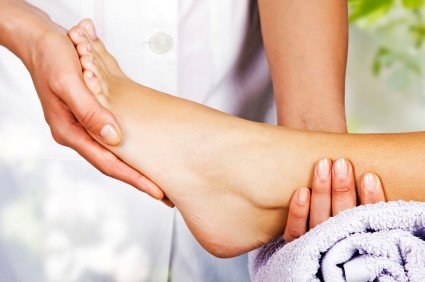 A new study being conducted by Loyola University Medical Center is testing two physical therapy regimens on their ability to treat plantar fasciitis, which creates sharp heel pain. Participants will be randomly sorted into two groups: one group will receive therapy that focuses on soft tissue mobilization with hand manipulation by a physical therapist, while the other group will receive therapy called the Graston Technique which uses stainless steel instruments to identify and then break up scar tissue to be absorbed by the body. The study’s participants will undergo treatments twice per week for four weeks, with treatments lasting from 30 to 60 minutes.
A new study being conducted by Loyola University Medical Center is testing two physical therapy regimens on their ability to treat plantar fasciitis, which creates sharp heel pain. Participants will be randomly sorted into two groups: one group will receive therapy that focuses on soft tissue mobilization with hand manipulation by a physical therapist, while the other group will receive therapy called the Graston Technique which uses stainless steel instruments to identify and then break up scar tissue to be absorbed by the body. The study’s participants will undergo treatments twice per week for four weeks, with treatments lasting from 30 to 60 minutes.
Plantar fasciitis can be very painful and inconvenient. If you are experiencing heel pain or symptoms of plantar fasciitis, visit Dr. Sharon L. Pletcher of Pennsylvania. Our doctor can treat your heel pain as well as any other foot or ankle condition.
What is Plantar Fasciitis?
Plantar fasciitis is the inflammation of a the thick band of tissue that runs along the bottom of your foot, known as the plantar fascia, and causes mild to severe heel pain.
What Causes Plantar Fasciitis?
· Excessive running
· Non-supportive shoes
· Overpronation
· Repeated stretching and tearing of the plantar fascia
How Can It Be Treated?
· Conservative measures – anti-inflammatories, ice packs, stretching exercises, physical therapy, orthotic devices
· Shockwave therapy – sound waves are sent to the affected area to facilitate healing and are usually used for chronic cases of plantar fasciitis
· Surgery – usually only used as a last resort when all else fails. The plantar fascia can be surgically detached from the heel
While very treatable, plantar fasciitis is definitely not something that should be ignored. Especially in severe cases, speaking to your doctor right away is highly recommended to avoid complications and severe heel pain. Your podiatrist can work with you to provide the appropriate treatment options tailored to your condition.
If you have any questions, please feel free to contact our office located in State College, PA. We offer the newest diagnostic and treatment technologies for all of your foot ankle injuries.
Read more about Plantar Fasciitis
More...
Physical Therapy Regimens tested for treating Plantar Fasciitis
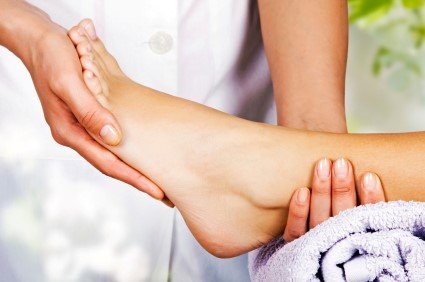 A new study being conducted by Loyola University Medical Center is testing two physical therapy regimens on their ability to treat plantar fasciitis, which creates sharp heel pain.
A new study being conducted by Loyola University Medical Center is testing two physical therapy regimens on their ability to treat plantar fasciitis, which creates sharp heel pain.
Participants will be randomly sorted into two groups: one group will receive therapy that focuses on soft tissue mobilization with hand manipulation by a physical therapist, while the other group will receive therapy called the Graston Technique which uses stainless steel instruments to identify and then break up scar tissue to be absorbed by the body. The study’s participants will undergo treatments twice per week for four weeks, with treatments lasting from 30 to 60 minutes.
Plantar fasciitis can be very painful and inconvenient. If you are experiencing heel pain or symptoms of plantar fasciitis, visit Dr. Sharon L. Pletcher of Pennsylvania. Our doctor can treat your heel pain as well as any other foot or ankle condition.
What is Plantar Fasciitis?
Plantar fasciitis is the inflammation of a the thick band of tissue that runs along the bottom of your foot, known as the plantar fascia, and causes mild to severe heel pain.
What Causes Plantar Fasciitis?
· Excessive running
· Non-supportive shoes
· Overpronation
· Repeated stretching and tearing of the plantar fascia
How Can It Be Treated?
· Conservative measures – anti-inflammatories, ice packs, stretching exercises, physical therapy, orthotic devices
· Shockwave therapy – sound waves are sent to the affected area to facilitate healing and are usually used for chronic cases of plantar fasciitis
· Surgery – usually only used as a last resort when all else fails. The plantar fascia can be surgically detached from the heel
While very treatable, plantar fasciitis is definitely not something that should be ignored. Especially in severe cases, speaking to your doctor right away is highly recommended to avoid complications and severe heel pain. Your podiatrist can work with you to provide the appropriate treatment options tailored to your condition.
If you have any questions, please feel free to contact our office located in State College, PA. We offer the newest diagnostic and treatment technologies for all of your foot ankle injuries.
CJ Miles Discusses His Use of Orthotics for Sore Flat Feet
 Indiana Pacers’ forward CJ Miles was feeling spasms in his feel while participating in his pregame routine, when he decided to go back to the locker room for treatment. The cramp-like feeling in his feet was due to his flat feet locking up during training. Miles has even stated that his feet are so flat he has suffered from calf strains. The forward has been working with trainer Josh Corbeii to find the right fit of orthotics to reduce the unpredictable cramping of his feet during games and practices.
Indiana Pacers’ forward CJ Miles was feeling spasms in his feel while participating in his pregame routine, when he decided to go back to the locker room for treatment. The cramp-like feeling in his feet was due to his flat feet locking up during training. Miles has even stated that his feet are so flat he has suffered from calf strains. The forward has been working with trainer Josh Corbeii to find the right fit of orthotics to reduce the unpredictable cramping of his feet during games and practices.
If you are having discomfort in your feet and would like to try orthotics, contact Dr. Sharon L. Pletcher of Pennsylvania. Our doctor will treat your foot and ankle needs.
What are Orthotics?
Orthotics are inserts you can place into your shoes to help with a variety of foot problems such as flat feet or foot pain. Orthotics provide relief and comfort for minor foot and heel pain, but can’t correct serious biomechanical problems in your feet.
Over-the-Counter Inserts
Orthotics come in a wide variety of over-the-counter inserts that are used to treat foot pain, heel pain, and minor problems. For example, arch supports can be inserted into your shoes to help correct over arched or flat feet, while gel insoles are often used because they provide comfort and relief from foot and heel pain by alleviating pressure.
Prescription Orthotics
If over-the-counter inserts don’t work for you, or if you have a more severe foot issue, it is possible to have your podiatrist prescribe custom orthotics. These high quality inserts are designed to treat problems such as abnormal motion, plantar fasciitis, and more severe heel pain. They can even be used to help patients suffering from diabetes by treating foot ulcers and painful calluses, and are usually molded to your feet individually, which allows them to provide full support and comfort.
If you are experiencing minor to severe foot or heel pain, it’s recommended to speak with your podiatrist on the possibilities of using orthotics. A podiatrist can determine which type of orthotic is right for you and allow you to take the first steps towards being pain free.
If you have any questions, please feel free to contact our office located in State College, PA. We offer the newest diagnostic and holistic treatment protocols for all your individual foot and ankle needs.
Read More About Orthotics
Proper Supportive Footwear can Prevent Long Term Foot Problems
 Whether you were born with perfect feet or have every ailment possible in your lower extremities, it is necessary to have the proper footwear to avoid future pain and practice every day foot care. Often time many common foot problems such as plantar fasciitis, heel spurs, and hammertoes occur because of ill-fitting and unsupportive footwear. By having your foot fitting for the best type of shoe that suits your needs, you are treating and preventing foot complications.
Whether you were born with perfect feet or have every ailment possible in your lower extremities, it is necessary to have the proper footwear to avoid future pain and practice every day foot care. Often time many common foot problems such as plantar fasciitis, heel spurs, and hammertoes occur because of ill-fitting and unsupportive footwear. By having your foot fitting for the best type of shoe that suits your needs, you are treating and preventing foot complications.
Finding shoes with the proper fit and support is only one portion in maintaining everyday foot care. For more information about everyday foot care, consult with Dr. Sharon L. Pletcher of Pennsylvania. Our doctor will provide you with the foot- and ankle information you seek.
Every Day Foot Care
Often, people take care of their bodies, face and hair more so than they do for their feet. But the feet are a very important aspect of our bodies, and one that we should pay more attention to. After all, without our feet, we would not be able to perform most daily tasks. It is best to check your feet regularly to make sure there are no new bruises or cuts that you may not have noticed before, for example.
For dry feet, moisturizer can easily be a remedy and can be applied as often as necessary to the affected areas. Wearing shoes that fit well can also help you maintain good foot health, as well as making it easier to walk and do daily activities without the stress or pain of ill-fitting shoes, high heels, or even flip flops.
Also, wearing clean socks with closed shoes is important to ensure that sweat and bacteria do not accumulate within the shoe. Clean socks help to prevent athlete’s foot, fungi problems, bad odors, and can absorb sweat.
If you have any questions, please feel free to contact our office located in State College, PA. We offer the newest diagnostic and treatment technologies for all of your foot ankle injuries.
Treatment for Plantar Wart Sufferers
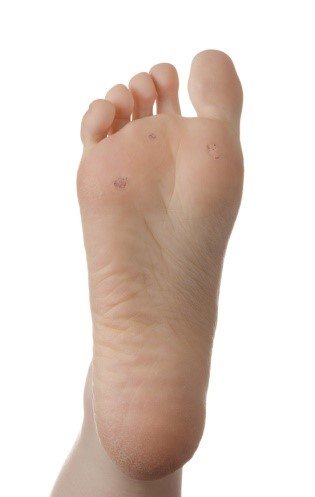 Plantar warts are typically hard and grainy growths that appear on the heels and balls of the feet. Warts occur when the human papilloma virus (HPV) enters your body through cuts or weak spots on the bottom of the feet. Once plantar warts start to grow, they can take as long as two years to go away if not treated. Luckily there are plenty of treatments to reduce, remove, and prevent the inconvenience. Cryotherapy, also known as freezing therapy, is the most widely used method is removing warts, but it may not always work if the treatment does not reach the entire wart. Over-the-counter salicylic acids and prescription medications are also available aid wart removal process. If a plantar wart is particularly thick, a mixture of cryotherapy and salicylic acid treatments may ultimately do the trick.
Plantar warts are typically hard and grainy growths that appear on the heels and balls of the feet. Warts occur when the human papilloma virus (HPV) enters your body through cuts or weak spots on the bottom of the feet. Once plantar warts start to grow, they can take as long as two years to go away if not treated. Luckily there are plenty of treatments to reduce, remove, and prevent the inconvenience. Cryotherapy, also known as freezing therapy, is the most widely used method is removing warts, but it may not always work if the treatment does not reach the entire wart. Over-the-counter salicylic acids and prescription medications are also available aid wart removal process. If a plantar wart is particularly thick, a mixture of cryotherapy and salicylic acid treatments may ultimately do the trick.
Plantar warts can be painful and can worsen if not treated properly. If you would like to be treated for plantar warts, consult with Dr. Sharon Pletcher of Pennsylvania. Our doctor will attend to all of your foot and ankle needs and provide you with quality treatment.
About Plantar Warts
Plantar warts are found on the feet. These warts are caused by the human papillomavirus (HPV) getting into open wounds on the feet. You can recognize plantar warts by a hard bump on the foot. They are usually found on the heels or balls of the feet. Plantar warts are usually not a sign of anything dangerous but do not ignore them if they do cause pain or embarrassment.
If you do have a plantar wart, you may notice some pain when standing but since these warts are not cancerous or dangerous, a podiatrist only needs to be seen if there is excess pain. Although plantar warts don’t often call for treatment, there are options available. They can be frozen off, removed by an electric tool or burned off using laser treatment.
Home remedies are also available to help with plantar warts. An apple cider vinegar soak can help remove the wart. You can soak your feet in the vinegar for 20 minutes before using a pumice stone to remove any loose skin from the wart.
For more information about Plantar Warts, follow the link below.
If you have any questions, please feel free to contact our office located in State College, PA. We offer the latest in diagnostic and treatment technologies to meet all your needs.




